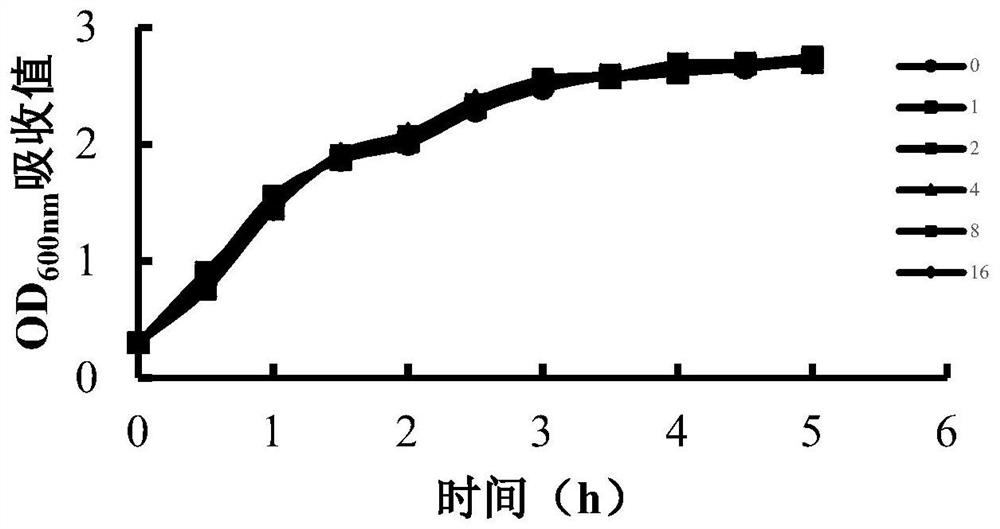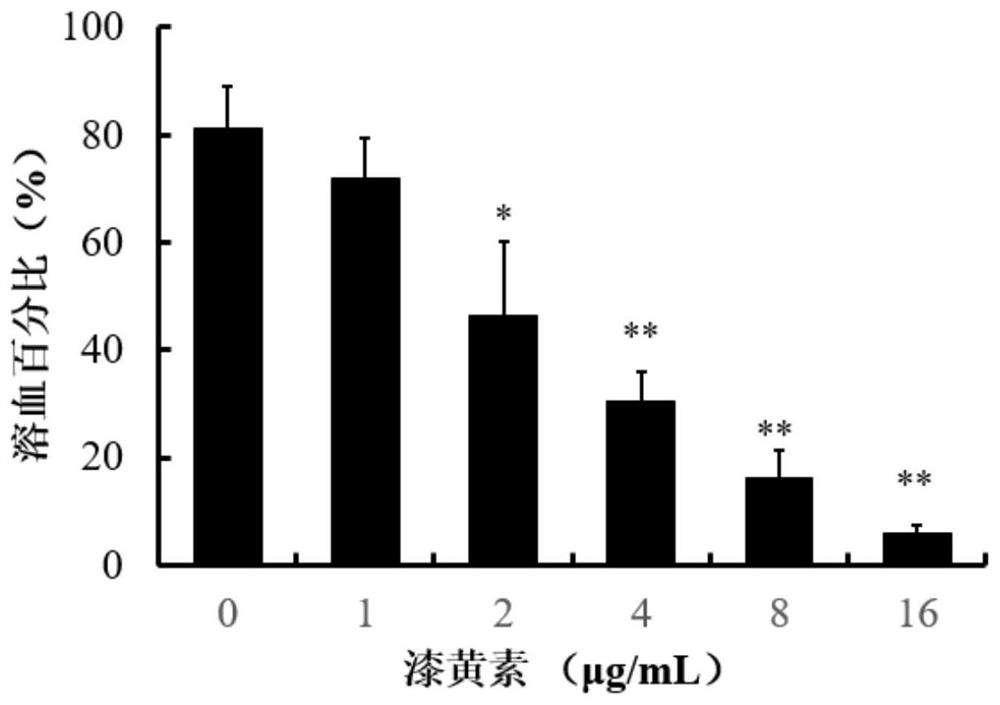Application of fisetin in resisting of Aeromonas hydrophila infection of aquaculture animals
A technology for Aeromonas hydrophila and aquaculture, which can be used in applications, antibacterial drugs, animal feed, etc., can solve the problems of drug-resistant bacteria and multi-drug-resistant bacteria, and achieve good therapeutic effects.
- Summary
- Abstract
- Description
- Claims
- Application Information
AI Technical Summary
Problems solved by technology
Method used
Image
Examples
Embodiment 1
[0013] Example 1: Determination of the minimum inhibitory concentration of fisetin against Aeromonas hydrophila
[0014] The Aeromonas hydrophila 168 strain involved in the present invention is preserved by the Aquatic Animal Pharmacology and Drug Residue Control Technology Laboratory of the Yangtze River Fisheries Research Institute. The minimum inhibitory concentration of fischerin against 168 strains was determined by the broth micro-dilution method recommended by CLSI. Proceed as follows:
[0015] (1) Dilute the prepared lacustrine (Sichuan Weikeqi Biotechnology Co., Ltd., purity> 98%, CAS No. 528-48-3) in a 96-well cell culture plate, and the concentration is 512μg / mL. , 256μg / mL, 128μg / mL, 64μg / mL, 32μg / mL, 16μg / mL, 8μg / mL, 4μg / mL, 2μg / mL, 1μg / mL; the drug volume per well is 100μL;
[0016] (2) Aseptically inoculate a single colony of 168 strains into MH medium at 30°C and cultivate overnight. Centrifuge the cells and adjust the concentration to 0.5 McDonnell's turbidity with...
Embodiment 2
[0017] Example 2: Effect of Fischerin on the growth of Aeromonas hydrophila
[0018] The Aeromonas hydrophila 168 strain involved in the present invention is preserved by the Aquatic Animal Pharmacology and Drug Residue Control Technology Laboratory of the Yangtze River Fisheries Research Institute. Strain 168 was cultured in BHI liquid medium to the early logarithmic growth period (OD600nm=0.3, 28℃), and the cultured bacteria were placed in 6 50mL conical flasks, each 20mL, and different concentrations (0, 1, 2, 4, 8, 16μg / mL) of lacustrine, continue to incubate for 5 hours at 28°C, and measure the OD every 30 minutes 600nm The absorption value. Attached figure 1 Shown are the growth curves of the co-cultivation of different concentrations of fisetin and Aeromonas hydrophila 168 strains. From the figure, it can be seen that the growth of fisetin on the growth of Aeromonas hydrophila at the concentration of 16μg / mL and below No effect.
Embodiment 3
[0019] Example 3: Effect of Fischerin on the hemolytic activity of Aeromonas hydrophila Aerolysin
[0020] The aerolysin involved in the present invention is prepared and stored by the Aquatic Animal Pharmacology and Drug Residue Control Technology Laboratory of the Yangtze River Fisheries Research Institute. The specific steps are as follows: add 975μL of PBS solution to 6 1.5mL centrifuge tubes, add 2μL of purified aerolysin at a concentration of 100μg / mL, and then add effluent to make the concentration in different centrifuge tubes reach 0, 1, 2, 4 respectively , 8,16μg / mL, mix well and put it in a 37℃ incubator; after 15min incubation, add 25μL of defibrinated sheep red blood cells (Shanghai Yuanye Biotechnology Co., Ltd.), continue to incubate at 37℃ for 15min, measure after high-speed centrifugation OD 543nm Absorbance, 1% TritonX-100 is a positive control. As attached figure 2 As shown, the hemolysis of aerolysin decreased in a dose-dependent manner with the increase o...
PUM
 Login to View More
Login to View More Abstract
Description
Claims
Application Information
 Login to View More
Login to View More - R&D
- Intellectual Property
- Life Sciences
- Materials
- Tech Scout
- Unparalleled Data Quality
- Higher Quality Content
- 60% Fewer Hallucinations
Browse by: Latest US Patents, China's latest patents, Technical Efficacy Thesaurus, Application Domain, Technology Topic, Popular Technical Reports.
© 2025 PatSnap. All rights reserved.Legal|Privacy policy|Modern Slavery Act Transparency Statement|Sitemap|About US| Contact US: help@patsnap.com



